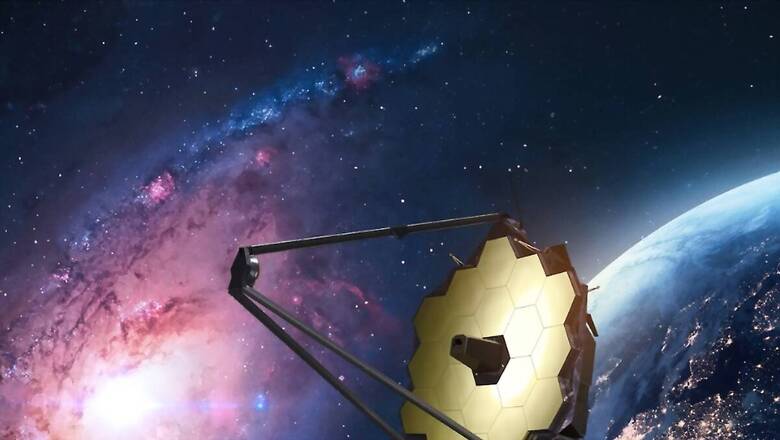
views
The biggest telescope ever sent into space, the James Webb Space Telescope (JWST), was launched by NASA in 2021. Since then, we’ve seen a whole new perspective on stars, planets and galaxies deeper into the cosmos than humans had ever. But, there are much more pressing concerns that have plagued people for ages: Are we alone? Is life as we know it a cosmic accident, a one-time event on our distant planet? Is there an abundance of life and maybe even intellect and self-awareness in the universe? Now, science is in a position to answer them with a tremendous leap forward.
As per The Times report on April 26, the James Webb Space Telescope was all set to direct its gaze to a far-off planet in a different solar system in order to examine one of the most intriguing clues to extraterrestrial life that has ever been found. This follows the discovery of a planet by astronomers that was rich in gas that could “only be produced by life.”
Red dwarf star K2-18, which is roughly half the size of our sun, is located beneath the constellation Leo and is too dim to be seen with the naked eye. A planet known as K2-18b is thought to be an ocean-covered globe with a radius around 2.6 times that of Earth that is in orbit around it.
Scientists have detected clues of something hidden in the atmosphere that may eventually prove that life exists somewhere other than Earth. It is known as dimethyl sulphide (DMS), a gas. The gas has a single source on Earth. According to NASA, it is “only produced by life,” mostly by “phytoplankton in marine environments.”
The study’s lead astrophysicist from Cambridge, Dr Nikku Madhusudhan, told the British newspaper that while the researchers could say with more than 50% confidence that DMS was present based on preliminary data returned by the JWST last year, this is far from “conclusive evidence.”
He was to hold off until the telescope’s eight hours of scheduled observations on Friday when it was going to look especially for DMS. Before he can confidently announce that it has been located, he will next spend months going through the data, according to The Times.
Despite their best efforts, scientists have been unable to come up with a natural geological or chemical mechanism that may produce DMS in the absence of live beings.
K2-18b is located 124 light-years from Earth. By galactic standards, this makes it a quite close neighbour, however, it would take a probe 2.2 million years to reach there at the Voyager spacecraft’s speed of 38,000 mph. To put it simply, it would take around 2175.44 years in human years for a probe travelling at the speed of the Voyager spacecraft to get to the planet K2-18b, which is located 124 light years away.
Thus far, research has revealed that certain colours of starlight are absorbed by clouds’ molecules as they travel through a planet’s atmosphere on its way to Earth. They leave an imprint in the spectrum that the JWST can analyse to determine the chemical composition of the atmosphere.
Dr Madhusudhan told The Times that the results clearly showed methane, carbon dioxide and a lack of ammonia.
“It solved a more than decade-long mystery, literally called the ‘missing methane problem’.” Though “theoretical work” on whether the gas may have a non-living source is ongoing, conclusions won’t be known for four to six months.




















Comments
0 comment